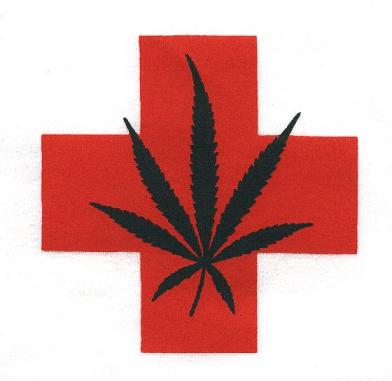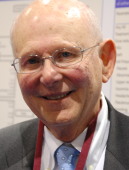
Let Compassion Guide
the Application of the Law
A Reasoned Plea for Medical Marijuana
by Lynda J. Williams
It’s compassionate and proper to exclude the smoking of medical marijuana from local, state, and federal non-smoking bans. But public debate shows that Americans are strongly divided on this issue. Some dismiss the “medical” in “medical marijuana” as a hoax, tricking us into grudging acceptance due to our natural compassion for the sick; others believe it’s a useful medical tool that has “been withheld from patients through regulations based on false claims”1 (“Assessing the Science Base,” 1999).
A recent article in the Santa Cruz Sentinel reported on the request by a medical marijuana co-op to lift the no-smoking ban in a public park in Santa Cruz, California. The proposal was to erect two tents away from the general public areas at the annual festival held by Wo/men’s Alliance for Medical Marijuana. These tented areas would be set aside for use by patients with state medical cards and prescriptions to smoke their marijuana, rather than use pills or “ingestibles” (cookies, candies, brownies, etc.), if they needed to in order to alleviate their pain or other debilitating symptoms during that five-hour festival 2 (Bookwalter, 2009). This triggered quite an online debate to which this author was a party.
Those in opposition to compassionate exclusion of medical marijuana smokers from general smoking bans tend to base their position on three basic points:
1. It’s not fair. The law that applies to one should apply to all. “Come on! Are these people super-citizens? Make them follow the rules that everybody else does” 3 (Santa Cruz Sentinel, 2009) .
2. It’s not medicine – they just want to get high. “These people already feel they are above any law and have gotten away with breaking the law under the guise of ‘medical marijuana,’ which is a joke for about 95% of those who claim some medicinal value” 3 (Santa Cruz Sentinel, 2009).
3. Second-hand marijuana smoke is harmful and it will increase my chances of getting lung cancer or some other respiratory illnesses.
The first argument used to keep the law in place for all smoking in public is fairness. The problem with the fairness argument is that it is usually trotted out when the person making the argument wants fairness for themselves – at the expense of fairness to others. And when countered, it usually falls flat.
“What's good for the goose is good for the gander. If I can't legally smoke my junk anywhere I want in SC anytime I want, then WAMM should NOT be allowed to, either.
“It's that simple: all for one and one for all.” 3 (Santa Cruz Sentinel, 2009)
Although I responded as follows, this lady has remained silent since her post:
“Mrs. Goodwin, do you ‘smoke your junk’ in order to keep your chronic, debilitating pain at a manageable level so that you can function throughout the day? Do you ‘smoke your junk’ so that you can keep breakfast, lunch, and dinner in your stomach instead of in the toilet - or worse, on the living room rug? Do you ‘smoke your junk’ in order alleviate your disease-wracked body's most debilitating symptoms so it can use it's energy to heal rather than curl up in a ball and die before your time?
“If so, then you have posed a reasonable suggestion.” 3 (Santa Cruz Sentinel, 2009)

There is a major precedent in all 50 states that it might be argued to be unfair if individuals are held exempt from it. This is the health law that states that animals are not allowed in restaurants and bars, and the lifting of that ban when it applies to service animals for the blind and other disabled persons. Just as there is a solid health reason for smoking bans, there is one for this law – animals generally tend to carry disease and germs that we may not want around our food. In addition, some people are allergic to or fear some animals that are considered safe pets.
However, according to the U.S. Department of Justice, “Under the Americans with Disabilities Act (ADA), businesses and organizations that serve the public must allow people with disabilities to bring their service animals into all areas of the facility where customers are normally allowed to go. This federal law applies to all businesses open to the public, including restaurants, hotels, taxis and shuttles, grocery and department stores, hospitals and medical offices, theaters, health clubs, parks, and zoos.” 4 (“ADA Business Brief: Service Animals,” n.d.)
They go on to state, “Allergies and fear of animals are generally not valid reasons for denying access or refusing service to people with service animals.” 4 (“ADA Business Brief: Service Animals,” n.d.)
So, our society generally agrees that the compassionate and reasonable lifting of an otherwise sound health law is acceptable if it allows its physically challenged members to participate in activities the rest of us take for granted. When is the last time you heard someone complain that it was unfair for the guide dog at the next table to be in the restaurant? Indeed, when is the last time you heard a complaint about any service dog being anywhere?
In the same way, the compassionate exclusion from smoking bans for those who cannot make it through the day without inhaled marijuana outweighs the unsubstantiated fears brought by some members of society. It enables many who would otherwise be confined to sick beds, doubled over in pain, to function comfortably outside their homes and contribute to the welfare of the rest of society in general, as we’ll see shortly.
What about the, “It’s not medicine” argument? Has marijuana been scientifically shown to actually alleviate the debilitating symptoms of things like the nausea and vomiting associated with chemotherapy, the horrible pain of a migraine or herniated disk, or the crippling effects of multiple sclerosis – just to list a few? If not, then there is no supported reason to lift the ban for medical marijuana users.
It’s important to understand that THC, one of approximately 30 active ingredients in marijuana, is an FDA-approved drug. It’s known generically as dronabinol, and goes by the brand name Marinol. Marijuana is not put forth so much as a cure for disease as it is for relief from crippling symptoms. So categories of the indications for marijuana use are based on symptoms - nausea, appetite loss, or chronic pain – and not the diseases themselves. 1 (“Assessing the Science Base,” 1999)
To share just one example, according to the References on Multiple Sclerosis and Marijuana at the Schaffer Library of Drug Policy, “Marijuana is reported to decrease spasticity in patients with multiple sclerosis. This is a double blind, placebo controlled, crossover clinical trial of delta-9-THC in 13 subjects with clinical multiple sclerosis and spasticity. Subjects received escalating doses of THC in the range of 2.5-15 mg., five days of THC and five days of placebo in randomized order, divided by a two-day washout period.
“Subjective ratings of spasticity and side effects were completed and semi quantitative neurological examinations were performed. At doses greater than 7.5 mg there was significant improvement in patient ratings of spasticity compared to placebo. These positive findings in a treatment failure population suggest a role for THC in the treatment of spasticity in multiple sclerosis.” 5 (“References on Multiple Sclerosis and Marijuana,” n.d.) So it doesn’t cure multiple sclerosis, but a large percentage of MS patients are able to live longer, more productive lives when they are treated with marijuana.
In 2007, Bruce Merkin noted at AlterNet.com that “new research demonstrates that all those fears of ‘smoked marijuana’ as medicine are 100 percent obsolete.” (Merkin, 2007)
According to Merkin, the active components of marijuana, known as “cannabinoids” (the best-known one is THC), are fat-soluble molecules. They are not absorbed evenly when taken orally, nor do they “kick in” quickly when fast relief is needed to curb pain or nausea. Inhalation is, to date, the most effective way to deliver the medicinal dosage of marijuana for the fastest relief of debilitating symptoms. (Merkin, 2007)
He goes on to quote The Lancet Neurology as stating, “Smoking has been the route of choice for many cannabis users because it delivers a more rapid 'hit' and allows more accurate dose titration." In fact, the effect is so rapid that a patient smoking marijuana stops as soon as relief occurs, almost always before intoxication begins. (Merkin, 2007)
I asked Jessie Lilley, who has been the caregiver for her husband while he’s been receiving radiation and hormone therapy for prostate cancer, what their experiences have been. She told me, “Only positive. David was diagnosed with prostate cancer in January of 2009. It is now October of 2009. He actually gained weight over that period! Through all the treatments he's endured, he's never lost his appetite. If he was feeling ill, he'd have a couple of hits and any discomfort was eased so he was able to eat a proper meal. He was also able to sleep by smoking before bedtime, ensuring proper rest so his body could work with the treatments.” She went on to say, “With all the problems associated with a situation like this as it is, I don't want to even imagine the last 9 months without the ability to use medical marijuana!”
This effectively quashes the “these people just want to get high without getting arrested” argument so often posed by the opposition. All that “these people” want to do is bring their pain or other symptoms to a manageable level so they may participate in society in relative comfort, with their wits about them. And as we’ve seen in Merkin’s comments, marijuana smoke delivers the medicine that makes that possible.
And finally, the general objection that marijuana smoke is a health hazard. “This year, ‘we're going to have to make sure they reduce their impact of secondhand smoke as much as everyone else,’ Santa Cruz, CA Councilman Ryan Coonerty said. ‘The law was meant to cover all secondhand smoke, and secondhand smoke at WAMMfest is part of it.’” (Bookwalter, 2009)
 As to concerns about the cancer-causing effects of marijuana smoke, which is the basis of second-hand smoke concerns, the largest study of its kind, funded by the National Institutes of Health's National Institute on Drug Abuse, turns that on its ear. (Kaufman, 2006)
Dr. Donald Tashkin [pictured left] of the University of California at Los Angeles is a pulmonologist who has studied marijuana for 30 years. Because there are known carcinogens in the marijuana plant, he was certain that the above-mentioned study would prove his hypothesis that marijuana smoke was a cause of lung cancer. As to concerns about the cancer-causing effects of marijuana smoke, which is the basis of second-hand smoke concerns, the largest study of its kind, funded by the National Institutes of Health's National Institute on Drug Abuse, turns that on its ear. (Kaufman, 2006)
Dr. Donald Tashkin [pictured left] of the University of California at Los Angeles is a pulmonologist who has studied marijuana for 30 years. Because there are known carcinogens in the marijuana plant, he was certain that the above-mentioned study would prove his hypothesis that marijuana smoke was a cause of lung cancer.
"We hypothesized that there would be a positive association between marijuana use and lung cancer, and that the association would be more positive with heavier use," [Tashkin] said. "What we found instead was no association at all, and even a suggestion of some protective effect." (Kaufman, 2006)
Mainstream opinions of the benefits and drawbacks of smoking marijuana, medically or otherwise, are understandably largely influenced by media reports. This is where most of mainstream America gets the information they use to form their opinions. In fact, there are five important facts about medical marijuana that the media have made every effort to keep from us (Armentano, 2009).
One such fact discussed by Armentano is that marijuana use is not associated with a rise in incidences of schizophrenia. For many years, worldwide media reported that smoking marijuana causes mental illness. A study at Keele University, Staffordshire, UK, was expected to support a conclusion that the use of marijuana would increase the risk of psychotic outcomes unrelated to its intoxication effects. In fact, a model of the association between marijuana use and schizophrenia appeared to support the conclusion that the cases of schizophrenia would increase from 1990 forward (as cited in Armentano, 2009).
The authors at the end of the study concluded, “Between 1996 and 2005 the incidence and prevalence of schizophrenia and psychoses were either stable or declining. Explanations other than a genuine stability or decline were considered, but appeared less plausible. In conclusion, this study did not find any evidence of increasing schizophrenia or psychoses in the general population from 1996 to 2005” (as cited in Armentano, 2009).
The medical use of marijuana is daily being more and more supported by scientific study, outside of the substantial anecdotal evidence. Studies clearly show that when medically prescribed and used under specific instructions from a doctor, the judicial use of marijuana allows many people who would otherwise be confined to their homes or beds to again become contributing and active members of society. They are able to enjoy the same kinds of activities that the rest of us take for granted in the same way that wheelchairs and service animals have allowed paraplegics, quadriplegics, and the blind to return to “normal” lives.
Given that it has been shown in study after study that exposure to second-hand marijuana smoke is not as dangerous as once believed, the risk to the health and well-being of the rest of society appears to be no greater than the risk we take when we eat dinner in a restaurant when a guide dog rests quietly under the table next to us. In light of this evidence, it’s time we all calmed down, took a deep breath, and agreed that the use of medical marijuana at public social gatherings where smoking in general is banned by law, particularly when restricted to a limited physical location, is both warranted and compassionate.
Discuss This Article in the Mondo Cult Forums. Ms. Williams is willing to respond.
REFERENCES
1) Joy, J. E., Watson, Jr., S. J. and Benson, Jr., J. A. (Eds.). (1999). Assessing the science base. Washington, D.C.: NATIONAL ACADEMY PRESS
Kaufman, M. (2006, May 26) Study finds no cancer-marijuana connection. The Washington Post. Retrieved September 27, 2009 from WashingtonPost.com.
Merkin, B. (2007, May 2). New studies destroy the last objection to medical marijuana. Retrieved September 29, 2009 from AlterNet.
2) Bookwalter, G. (2009, September 15). WAMMfest asks for smoking exception, again. Santa Cruz Sentinel, Retrieved September 28, 2009 from SantaCruzSentinel.com.
3) Santa Cruz Sentinel (2009, September - October). WAMMfest asks for smoking exception, again: Comments, Retrieved October 22, 2009 from Topix.net.
4) ADA business brief: Service animals. U.S. Department of Justice, Civil Rights Division, Disability Rights Section. Retrieved September 27, 2009 from ADA.gov.
Armentano, P. (2009, September 23). 5 Things the Corporate Media Don't Want You to Know About Cannabis. AlterNet. Retrieved October 22, 2009 from AlterNet.org.
5) References on multiple sclerosis and marijuana. Schaffer Library of Drug Policy. Retrieved September 29, 2009 from DrugLibrary.org.
|






 As to concerns about the cancer-causing effects of marijuana smoke, which is the basis of second-hand smoke concerns, the largest study of its kind, funded by the National Institutes of Health's National Institute on Drug Abuse, turns that on its ear. (Kaufman, 2006)
Dr. Donald Tashkin [pictured left] of the University of California at Los Angeles is a pulmonologist who has studied marijuana for 30 years. Because there are known carcinogens in the marijuana plant, he was certain that the above-mentioned study would prove his hypothesis that marijuana smoke was a cause of lung cancer.
As to concerns about the cancer-causing effects of marijuana smoke, which is the basis of second-hand smoke concerns, the largest study of its kind, funded by the National Institutes of Health's National Institute on Drug Abuse, turns that on its ear. (Kaufman, 2006)
Dr. Donald Tashkin [pictured left] of the University of California at Los Angeles is a pulmonologist who has studied marijuana for 30 years. Because there are known carcinogens in the marijuana plant, he was certain that the above-mentioned study would prove his hypothesis that marijuana smoke was a cause of lung cancer.